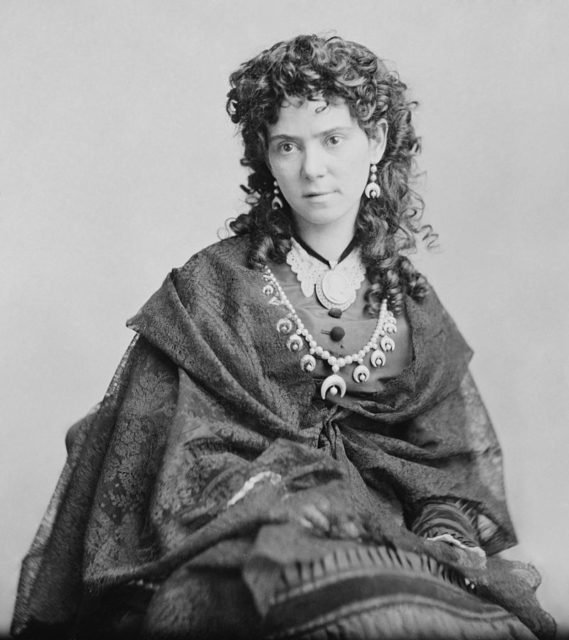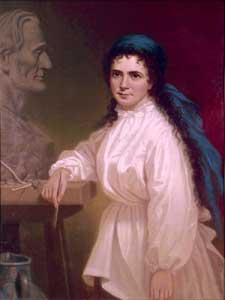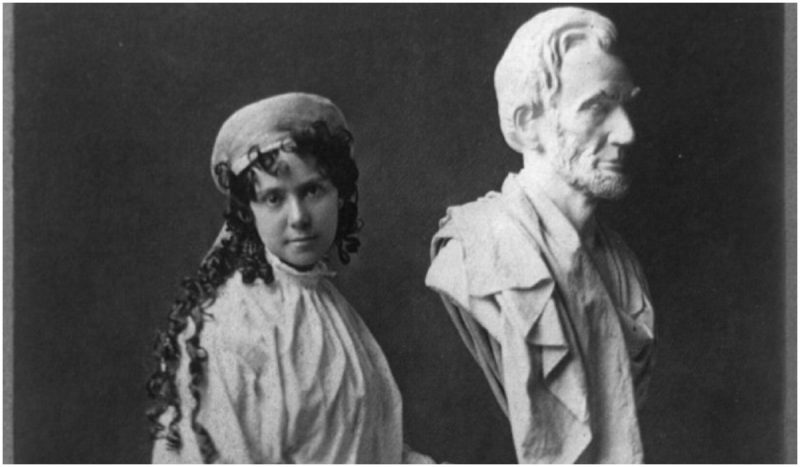On a cold, dreary January evening in 1871, a crowd gathered at the steps of the U.S. Capitol Building in Washington, D.C. The rotunda was filled to capacity with people who had come to witness the unveiling of an iconic sculpture. Supreme Court Justice David Davies addressed the crowd with a brief speech, after which he raised the red, white, and blue flag and revealed what people had come to see–the gracious, marble statue of Abraham Lincoln.
The statue was saluted with grand applause. The sculpture’s creator, Vinnie Ream, was the youngest person and the first woman to be awarded an art commission for a statue by the U.S. government.
The revolutionary story of Lavinia Ellen “Vinnie” Ream began soon after the tragic death of Abraham Lincoln in 1865. Born as one of seven siblings in Madison, Wisconsin, in 1847, Ream showed artistic talents at an early age. She learned drawing and painting from the Indian settlers near her home in Wisconsin. She extended the practice and exploration of her talents at the Academy, a division of the Christian College of Columbia, Missouri. With the outbreak of the Civil War, her family moved to Washington D.C. where Ream worked as a clerk in the postal service as well as volunteering for a war relief project.

According to the book A Labor of Love: The Life and Art of Vinnie Ream by Glenn V. Sherwood, in 1863 Missouri’s congressman James Rollins introduced her to the sculptor Clark Mills. Mills invited her to assist his work as a student helper and Ream most gladly accepted. Making the most of working in the studio, she made portrait busts and medallion reliefs of many notable persons, including Pennsylvania representative Thaddeus Stevens.
In 1864, Vinnie somehow persuaded President Lincoln to sit as a model. The bust that she produced from these sessions was to propel her to a new level of recognition. Following Lincoln’s death, she used the bust as her entry into the competition for the commission to create his full-size statue. Aged just 18 years, her entry was selected.
Her selection was controversial due to her inexperience and accusations that she was a of questionable reputation. Even as she embarked on creating the plaster model for her sculpture, she almost lost her commission because of concerns that she had influenced the vote of Edmund Ross. Soon, the Lincoln model was completed and approved by Congress, and Ream sailed to Italy to carve of the statue from a block of Carrara marble. Still dogged by controversy, Ream endured rumors that she did not actually complete the statue herself but that it was produced by Italian stone-carvers. It was because of her time spent in Europe that Ream is included among those female American sculptors who are tagged the “White Marmorean Flock.”
The marble statue and its creator returned to Washington in late 1870 and Ream presented her work to the public in a dazzling ceremony attended by government officials. Describing the piece, she declared, “I think that history is particularly correct in writing Lincoln down as the man of sorrow. The one great, lasting, all-dominating impression that I have always carried of Lincoln has been that of unfathomable sorrow, and it was this that I tried to put into my statue.”
At the end of 1871, Ream established her own studio in New York. Her most notable works on display in New York are the marble statue of the Greek poet Sappho as well as the one of Meriam, the Biblical prophetess.

Almost a decade later, at a great fun-fair, Ream presented another major work: the ten-feet tall bronze figure of civil admiral David Farragut. Sometime before her death in 1914, Ream was working on a statue of the Cherokee linguist Sequoia. This work was later completed by the artist George Julian Zolnay. She died in Washington D.C. and was buried in Arlington Cemetery. A replica of her Sappho sculpture marks her grave.
Today, observers continue to admire her Lincoln statue, which stands in the Statuary Hall inside the U.S. Capitol. The monumental sculpture testifies to Lincoln and Ream’s mutual victorious vision which elevated the ground of the common man in a world of social privilege.
